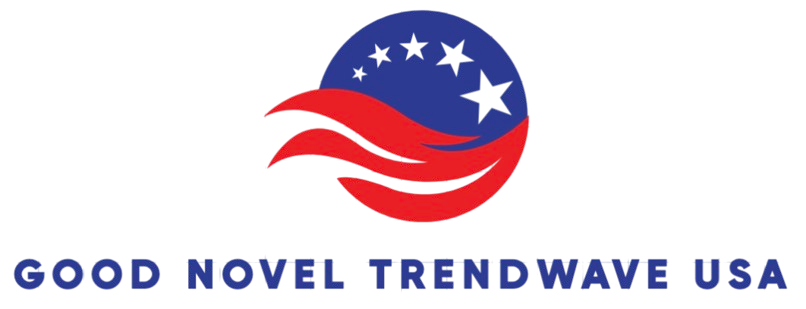Leveraging AI to Create McKinsey-Style Competitive Analysis Reports
In today’s competitive landscape, businesses must rely on effective strategies to stand out. McKinsey-style competitive analysis reports offer a structured way to understand market dynamics, competitors, and opportunities. Leveraging artificial intelligence (AI) can elevate these reports to new heights by automating data collection, enhancing analysis, and providing actionable insights.
🚀 Unlock New Opportunities! 🚀
Ready to boost your income, learn new skills, and achieve financial freedom? Explore these highly recommended offers selected just for you!
Fast Wealth
Discover HowLive Chat Jobs - You have to try this one
Start Chatting & Earn!Paid Online Writing Jobs - Get Paid To Do Simple Writing Jobs Online
Get Paid To Write!Cellphone Cash, Over $2 Million spent in testing!
Earn With Your Phone!Writeappreviews.com - Get Paid To Review Apps On Your Phone
Review Apps & Get Paid!InstaDoodle
Explore InstaDoodle!John Thornhills Ambassador Program - OVER 1 MILLION PAID TO JVs SO FAR
Join The Program!Get Paid to be a Virtual Online Assistant - Remote Work Jobs
Become A VA!The GPT Creator Club
Join The Club!Utilizing AI tools enables you to gather vast amounts of data quickly. Traditional methods can be slow and labor-intensive, but AI streamlines this process. Here are a few ways to effectively leverage AI in creating these reports:
🚀 Unlock New Opportunities! 🚀
Ready to boost your income, learn new skills, and achieve financial freedom? Explore these highly recommended offers selected just for you!
Fast Wealth
Discover HowLive Chat Jobs - You have to try this one
Start Chatting & Earn!Paid Online Writing Jobs - Get Paid To Do Simple Writing Jobs Online
Get Paid To Write!Cellphone Cash, Over $2 Million spent in testing!
Earn With Your Phone!Writeappreviews.com - Get Paid To Review Apps On Your Phone
Review Apps & Get Paid!InstaDoodle
Explore InstaDoodle!John Thornhills Ambassador Program - OVER 1 MILLION PAID TO JVs SO FAR
Join The Program!Get Paid to be a Virtual Online Assistant - Remote Work Jobs
Become A VA!The GPT Creator Club
Join The Club!- Automated Data Gathering: AI can scan and extract data from various online sources, including news articles, social media, and competitor websites. This capability allows you to compile a comprehensive view of the competitive landscape without spending hours sifting through information.
- Sophisticated Data Analysis: Once data is collected, AI algorithms can identify patterns and trends that might go unnoticed during manual analysis. This insight enables you to make informed decisions about potential market strategies.
- Predictive Analytics: AI can analyze historical data to forecast future trends and behaviors. This feature is vital for anticipating shifts in consumer preferences or competitive actions, leading to proactive strategies.
- Sentiment Analysis: By applying natural language processing, AI can assess public sentiment towards competitors. Understanding how consumers feel about rival products or services can inform your strategic approaches.
- Visual Data Representation: AI tools often include visualization features to represent data graphically. Visuals such as charts and dashboards can simplify complex information and make your report more engaging.
Creating a McKinsey-style competitive analysis report requires clear and organized presentation. Here’s a structured approach to incorporating AI insights into your report:
AI Automation Workflow Get today
- Executive Summary: Begin with a brief overview that highlights your findings, including key trends and insights drawn from AI analysis.
- Market Overview: Use AI-generated data to paint a picture of current market conditions. Include growth rates, market size, and forecasts to provide a solid foundation for your analysis.
- Competitive Landscape: Identify major players in your industry. Use AI to gather intelligence on their strengths, weaknesses, and overall market position. This segment should also include data on market share distributions.
- Consumer Insights: Leverage AI-driven sentiment analysis to showcase consumer opinions and preferences. Highlight factors influencing decision-making and any notable shifts in consumer behavior.
- Opportunity Analysis: Identify gaps in the market by analyzing the competitive landscape. Use predictive analytics to highlight potential growth areas and sectors ripe for investment.
- Strategic Recommendations: Based on your AI-derived insights, propose actionable strategies. These could include entering new markets, product innovations, or targeted marketing initiatives.
One of the key benefits of using AI in your competitive analysis report is the speed at which you can produce comprehensive insights. In a world where timely information can make a crucial difference, having the ability to quickly adapt and respond to market changes is invaluable.
However, it’s not solely about the data you collect or the analysis performed; it’s also about the storytelling aspect. The insights derived from AI need to be presented compellingly to engage stakeholders. Ensure your report has a logical flow, and use visuals effectively to create a narrative that resonates with your audience.
AI Automation Workflow Get today
Integrating AI into the creation of McKinsey-style competitive analysis reports transforms the process from a daunting task into an efficient and insightful journey. By embracing these advanced technologies, you can produce reports that not only inform but also guide strategic decision-making. Whether you are looking to solidify your position in the market or explore new avenues for growth, a well-crafted report can be your best ally.
Essential Components of a Competitive Analysis Report
Creating an effective competitive analysis report is essential for businesses looking to thrive in their markets. These reports provide insights into your rivals, helping you strategize and position your own offerings effectively. Here’s what you need to include in your competitive analysis.
1. Competitor Identification
Begin your report by identifying who your competitors are. This could range from direct competitors who offer similar products or services to indirect competitors that meet the same customer needs in different ways. Make a list of key players in your market, including well-established brands and up-and-coming challengers.
AI Automation Workflow Get today
2. Market Positioning
Understanding where your competitors stand in the market is crucial. Analyze each competitor’s market position based on various factors:
- Pricing Strategy
- Target Audience
- Value Proposition
- Unique Selling Points (USPs)
By evaluating these areas, you can determine how your business can differentiate itself and where gaps in the market exist.
AI Automation Workflow Get today
3. SWOT Analysis
A SWOT analysis (Strengths, Weaknesses, Opportunities, Threats) is an effective way to break down each competitor’s advantages and vulnerabilities:
- Strengths: What do they do well? Consider their reputation, quality, customer service, and brand loyalty.
- Weaknesses: Identify areas where they struggle. Is it their product quality, user experience, or customer reach?
- Opportunities: Look for emerging trends that they could exploit or gaps in their product lines.
- Threats: Assess external factors like changing regulations or upcoming competitors that could challenge their position.
4. Product and Service Analysis
Analyze the products or services offered by your competitors. Focus on key features, benefits, and any innovative aspects that may appeal to consumers. Consider conducting a feature comparison with your own offerings to see how they measure up.
AI Automation Workflow Get today
5. Marketing Strategies
Investigate your competitors’ marketing strategies. This includes:
- Content Marketing
- Social Media Presence
- SEO Tactics
- Email Campaigns
- Advertising Channels
By examining their approaches, you can gain insights into what resonates with the market and identify opportunities to improve your own marketing efforts.
AI Automation Workflow Get today
6. Customer Insights
Understanding customer feedback on your competitors can help you gauge their strengths and weaknesses. Look for reviews on platforms like Google, social media, and dedicated review sites. Pay attention to:
- The key themes in customer satisfaction.
- Common complaints and how competitors respond to them.
- Service quality and customer support effectiveness.
This information will inform your own customer service strategies and highlight areas where you can excel.
AI Automation Workflow Get today
7. Financial Performance
If available, include an analysis of your competitors’ financial health. Metrics such as revenue growth, market share, and profitability can indicate their market strength and longevity. Utilize data from industry reports, press releases, and financial statements to back your observations.
8. Future Outlook
Provide insights into the future trends that may impact your industry and your competitors. Consider current innovations, regulatory changes, and shifting consumer preferences. Propose scenarios that highlight how these factors may affect your competitive landscape in the coming years.
AI Automation Workflow Get today
A robust competitive analysis report equips you with valuable insights to make informed business decisions. By systematically evaluating each competitor across key dimensions, you position your own business to not just understand the marketplace but actively thrive within it. Emphasizing clarity and actionable insights in your report will ensure that your findings have a real impact on your business strategy.
The Role of Data Analytics in Enhancing Competitive Insights
Data analytics plays a pivotal role in helping businesses enhance their competitive insights. With vast amounts of information available at our fingertips, harnessing the right data can be the difference between leading the market and trailing behind. By understanding how to effectively analyze data, you can unveil deeper insights about your competitors and the overall market landscape. Here’s how data analytics can elevate your competitive analysis efforts.
To get started, it’s essential to recognize the types of data that can provide significant insights:
AI Automation Workflow Get today
- Market Trends: Identifying emerging trends in your industry can help you anticipate changes and adapt proactively.
- Customer Behavior: Analyzing consumer preferences and shopping habits can guide product development and marketing strategies.
- Competitor Strategies: Reviewing your competitors’ tactics can illuminate their strengths and weaknesses.
- Pricing Models: Understanding competitors’ pricing can help you position your products competitively.
Artificial Intelligence (AI) technology is transformative in this context. Using AI tools can vastly improve the speed and accuracy of data analysis. Here’s how you can leverage AI for competitive insights:
- Real-Time Data Processing: AI algorithms can process data rapidly, enabling you to glean insights almost instantaneously.
- Predictive Analytics: These algorithms can analyze past data to predict future trends, helping you to make agile business decisions.
- Sentiment Analysis: AI can evaluate customer feedback across various platforms, giving you a clear picture of consumer sentiment toward your brand and competitors.
- Automated Reporting: Save time by using AI tools to automatically generate reports based on the data you track.
However, simply utilizing data analytics isn’t enough. To truly enhance your competitive insights, you must integrate these analytics into your strategic decision-making process. Here are a few steps to do this:
AI Automation Workflow Get today
- Define Your Objectives: Understand what you aim to achieve through your analysis. Is it customer retention, market share increase, or refining your product line?
- Collect Relevant Data: Ensure that the data collected aligns with your objectives. Quality matters as much as quantity in this stage.
- Analyze and Interpret: Use data analytics tools to sift through the information and interpret the results in the context of your objectives.
- Test and Iterate: Put your findings to the test. Monitor results and make necessary adjustments based on real-life outcomes.
Another crucial aspect of enhancing competitive insights through data analytics is collaboration. Engaging different departments within your organization can lead to a broader understanding of the data collected. When marketing, sales, and product development teams communicate and share findings, it creates a more comprehensive view of the market landscape.
Utilizing visualization tools can also significantly improve the understanding of data. Graphs, charts, and heat maps can communicate complex data in a more digestible format, making it easier for stakeholders to grasp essential insights at a glance.
AI Automation Workflow Get today
Moreover, staying updated with the latest technologies in data analytics is vital. As new tools emerge, they can provide additional capabilities that sharpen your competitive edge. Invest in training for your team to ensure they are skilled in the latest tools and technologies.
Data analytics into your business strategy can yield profound insights that drive success. By utilizing AI tools effectively, defining your objectives clearly, and creating a culture of collaboration, you’ll be well on your way to staying ahead of the competition. Ultimately, it’s about how well you leverage information to make informed decisions that can determine your position in the market. Engage in continual learning, adapt, and keep your eyes open to the shifting landscape of your industry.
Best Practices for Presenting Your Competitive Analysis Findings
Presenting competitive analysis findings effectively is crucial for decision-making processes within any organization. It provides valuable insights regarding market positioning, competitor strengths, and potential strategies to improve your own offerings. If you want your audience to grasp your findings quickly and retain key insights, here are some best practices to follow.
AI Automation Workflow Get today
Know Your Audience
Understanding who you’re presenting to is a vital first step. Tailor your presentation style, tone, and content based on your audience’s familiarity with the topic. For instance, executives might prefer high-level summaries with actionable insights, while a technical team may need detailed data to understand underlying trends. Engage them by considering:
- What key questions do they have?
- What are their specific interests related to the competitive analysis?
- How familiar are they with the industry context?
Structure Your Findings Clearly
Organize your competitive analysis report logically to enhance readability. Use clear sections such as:
AI Automation Workflow Get today
- Introduction – Briefly outline the purpose of the analysis.
- Market Overview – Summarize key market trends relevant to your findings.
- Competitor Profiles – Provide insights into each competitor’s strengths and weaknesses.
- Key Takeaways – Highlight the most critical points that the audience should remember.
Utilize Visuals Effectively
Visual aids significantly enhance understanding and retention. Use charts, graphs, and infographics to present data dynamically. Here’s how to make visuals work for you:
- Charts: Use bar charts to compare competitors side-by-side, showing market share or various metrics.
- Graphs: Utilize line graphs to illustrate trends over time, demonstrating shifts in performance metrics.
- Infographics: Condense complex information into easily digestible visuals that tell a story at a glance.
Make sure to label all visuals clearly and provide context to explain what the audience should infer from them.
AI Automation Workflow Get today
Be Direct and Concise
Keep your messaging direct. Avoid jargon and aim for a concise delivery of your findings. Use bullet points for key insights rather than dense paragraphs. This approach allows your audience to glean information quickly and effectively. When presenting:
- Stick to the most significant data and insights that support your main message.
- Aim for clarity over complexity; simplify whenever possible.
- Practice your delivery to ensure that you can communicate ideas clearly without over-complicating them.
Encourage Interaction
Engage your audience by facilitating questions and discussing their thoughts throughout the presentation. Creating an interactive atmosphere encourages buy-in and helps clarify complex points. Consider:
AI Automation Workflow Get today
- Asking open-ended questions after each section to solicit feedback and insights.
- Using polls or surveys before or during the presentation to gauge understanding and areas of interest.
- Making time for a Q&A session at the end to address any lingering questions your audience may have.
Emphasize Actionable Insights
While presenting your findings, it’s essential to emphasize actionable insights derived from the data. Help your audience connect insights with practical steps moving forward. Identify:
- Opportunities for growth based on competitor weaknesses.
- Potential threats from stronger competitors and how to mitigate them.
- Strategies on how to leverage your strengths against competitor positioning.
Follow Up on Your Presentation
After the presentation, consider sending a follow-up email containing a summary of your findings, key visuals, and any resources mentioned during the discussion. This not only reinforces your message but allows your audience to revisit and reflect on the material.
AI Automation Workflow Get today
These best practices can transform your competitive analysis presentations from ordinary to extraordinary. By focusing on clear messaging, enhancing visuals, and fostering engagement, you can ensure your findings resonate effectively with your audience, driving informed decisions that lead to business success.
Future Trends in Competitive Analysis and Artificial Intelligence
In today’s fast-paced business environment, the intersection of competitive analysis and artificial intelligence is revolutionizing how organizations strategize and operate. With the ability to process vast amounts of data quickly, AI is changing competitive analysis from a tedious and time-consuming task to a more dynamic and insightful process. Organizations can now effectively assess their competition and market landscape, leading to more informed decision-making.
One of the most significant trends is the emergence of machine learning algorithms that can predict market shifts and competitor actions. These algorithms analyze historical data and identify patterns, enabling businesses to anticipate changes before they happen. By leveraging these predictive insights, companies can adapt their strategies proactively rather than reactively, gaining a significant edge over competitors.
AI Automation Workflow Get today
Another trend is the integration of natural language processing (NLP) within competitive analysis tools. NLP allows computers to understand and interpret human language in a meaningful way. Tools equipped with NLP can scan and analyze social media, news articles, and customer reviews to gauge public sentiment about competitors and industry trends. This real-time feedback loop can empower businesses to adjust their marketing strategies and product offerings based on consumer perceptions.
The rise of big data has made it possible for companies to gather insights from an unprecedented volume of information. Through advanced data analytics, AI systems can segment customers and competitors into various categories based on behavior, preferences, and demographics. This segmentation allows organizations to hone their competitive analysis further, targeting specific market niches and tailoring their approaches accordingly.
AI Automation Workflow Get today
AI-powered tools are also streamlining the reporting process. Traditionally, generating competitive analysis reports required extensive manpower and resources. Today, businesses can automate this process, cutting down on time and increasing accuracy. With AI handling repetitive tasks, analysts can focus on strategic thinking, interpreting findings, and implementing their insights effectively.
Some key components of future trends in competitive analysis and AI include:
AI Automation Workflow Get today
- Data Visualization: As reports become more automated, the need for intuitive data visualization grows. AI tools can create compelling visuals that highlight trends and insights, making it easier for stakeholders to understand complex data at a glance.
- Personalization: Advanced AI systems will enable personalized competitive analysis tailored to specific business needs, ensuring that companies receive insights relevant to their unique market situations.
- Real-Time Monitoring: The future of competitive analysis will focus on continuous monitoring. AI can track competitors’ movements and market conditions in real time, alerting businesses to significant changes without delay.
- Enhanced Decision-Making: By providing deeper insights and conditions, AI-driven analysis can empower decision-makers to act swiftly and confidently in dynamic market environments.
The use of AI in competitive analysis also fosters a culture of innovation. Organizations can experiment with various strategies, quickly assess their outcomes, and pivot as necessary. This agility is crucial in today’s rapidly changing markets, where consumer preferences can shift overnight.
However, companies must remain aware of potential ethical considerations surrounding AI’s use in competitive analysis. Data privacy becomes a significant concern as businesses collect and analyze vast amounts of consumer information. Ensuring compliance with regulations and maintaining consumer trust should always be a priority while implementing AI-driven competitive analysis tools.
AI Automation Workflow Get today
Moreover, while AI significantly enhances the capabilities of competitive analysis, human oversight remains essential. Skilled analysts are required to interpret AI-generated data effectively, providing context and strategic direction based on their expertise. The collaboration between AI technology and human intelligence creates a robust system that maximizes the potential of competitive analysis.
As we look to the future, it is clear that the integration of artificial intelligence into competitive analysis will only deepen. Businesses that embrace these trends and stay ahead of technological advancements will establish themselves as leaders in their respective industries. The competitive landscape is undeniably evolving, and adapting to these changes will define the success of organizations in the years to come.
Conclusion
Creating McKinsey-style competitive analysis reports is not just about compiling data; it’s about telling a compelling story that informs your strategic decisions. By leveraging artificial intelligence, businesses can streamline their analysis processes, enabling them to generate insights more efficiently. Whether you’re a seasoned analyst or just getting started, understanding essential components like market overview, competitor profiles, and SWOT analysis is crucial. These elements provide a foundation for your report, ensuring it delivers actionable insights.
AI Automation Workflow Get today
Data analytics plays a pivotal role in enhancing the depth and accuracy of your competitive insights. With tools that analyze trends, customer behavior, and market dynamics, you can uncover hidden opportunities and threats within your industry. Coupling this with best practices for presentation—like clear visuals, straightforward language, and logical flow—ensures your findings resonate with your audience.
Looking ahead, the integration of AI into competitive analysis will only deepen. Trends suggest that as technology advances, so too will our ability to harness big data and machine learning. This evolution promises to refine our competitive intelligence, providing even more precise recommendations and foresight.
AI Automation Workflow Get today
Embracing these strategies not only equips you with robust analytical capabilities but also sets you apart in a competitive landscape. By combining traditional analysis with modern AI tools, you position your business for long-term success, paving the way for informed decision-making and strategic growth. With the right approach, your reports can become invaluable assets, guiding your organization through the complexities of today’s market.




